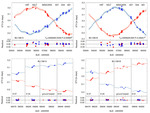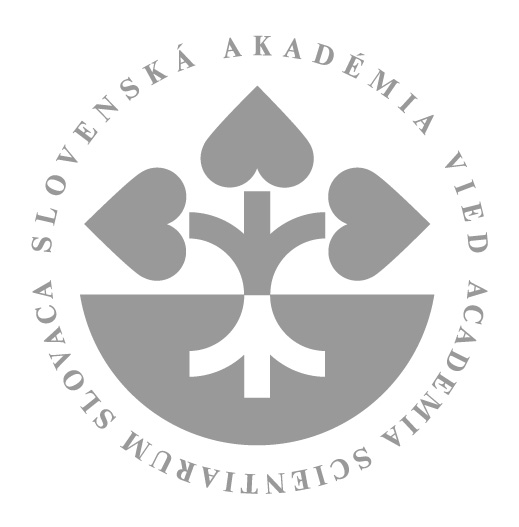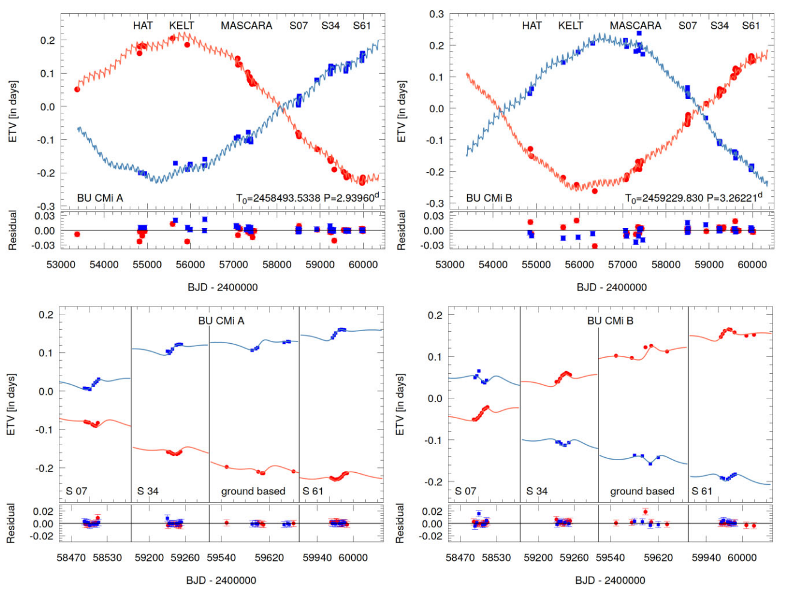| Authors: |
T. Pribulla, T. Borkovits, R. Jayaraman, S. Rappaport, T. Mitnyan, P. Zasche, R. Komzik, A. Pal, R. Uhlar, M. Masek, Z. Henzl, I.B. Biro, I. Csanyi, R. Stuik, M.H. Kristiansen, H.M. Schwengeler, R. Gagliano, T.L. Jacobs, M. Omohundro, V. Kostov, B.P. Powell, I.A. Terentev, A. Vanderburg, D. LaCourse, J.E. Rodriguez, G. Bakos, Z. Csubry, J. Hartman
|
| Description: |
We have found that the 2+2 quadruple star system BU CMi is currently the most compact quadruple system known, with an extremely short outer period of only 121 d. The previous record holder was TIC 219006972 (Kostov et al.), with a period of 168 d. The quadruple nature of BU CMi was established by Volkov, Kravtsova & Chochol, but they misidentified the outer period as 6.6 yr. BU CMi contains two eclipsing binaries (EBs), each with a period near 3 d, and a substantial eccentricity of 0.22. All four stars are within ~0.1 M⊙ of 2.4 M⊙. Both binaries exhibit dynamically driven apsidal motion with fairly short apsidal periods of 30 yr, due to the short outer orbital period. The outer period of 121 d is found both from the dynamical perturbations, with this period imprinted on the eclipse timing variations curve of each EB by the other binary, and by modeling the complex line profiles in a collection of spectra. We find that the three orbital planes are all mutually aligned to within 1 deg, but the overall system has an inclination angle near 83.5°. We utilize a complex spectro-photodynamical analysis to compute and tabulate all the interesting stellar and orbital parameters of the system. Finally, we also find an unexpected dynamical perturbation on a time-scale of several years whose origin we explore. This latter effect was misinterpreted by Volkov et al. and led them to conclude that the outer period was 6.6 yr rather than the 121 d that we establish here. |

 SAS
SAS


